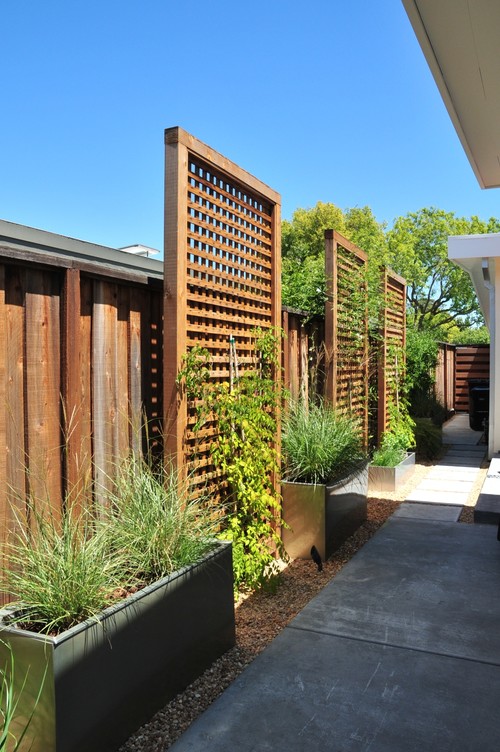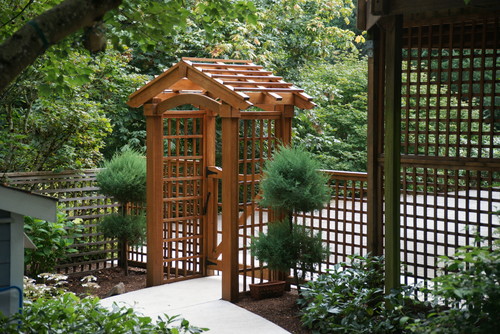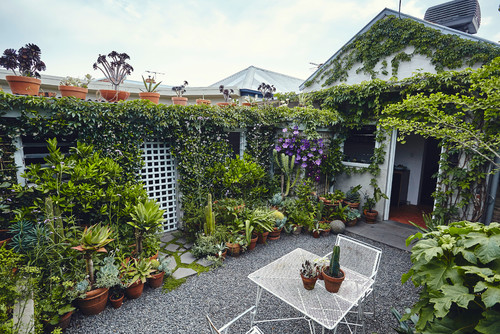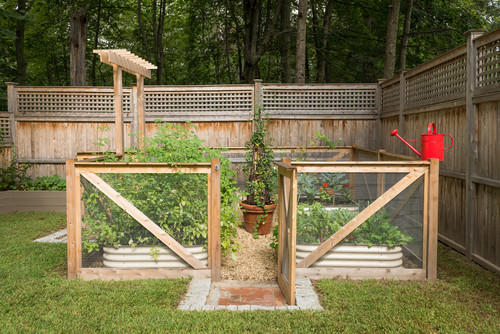22 Creative Lattice Fence Ideas for Gardens and Backyards

If you are looking for a classic, appealing, and easy option for fencing, lattice fencing is your best bet. Lattice fencing is most often found in gardens and patios, but can be used almost anywhere.
Lattice fencing is a classic style of fence, with many different uses, depending on your needs and space. The versatility and aesthetically pleasing nature of the lattice panels make it a favorite for gardens, fences, and patios alike. But don’t stop there.
It also adds interest and depth to plain siding or create a focal point for your garden. If you’ve got vegetables you can use lattice instead of trellis to support your taller plants.
Another advantage that makes lattice fencing a staple of gardens, is the ease in which plants can climb it. Many lattice fences become verdant garden walls covered in vines. A vine covered lattice works well to accentuate a flowerbed or vegetable garden.
Lattice is also often used as freestanding dividers, archways, and walls in yards. This is an interesting method for breaking up an open space, or creating a flow and motion to your outdoor areas.
Pros:
- Cost – Wooden lattice fencing is a very affordable option when compared to other kinds of wooden fences. Other kinds of fences can cost up to twice as much as a simple lattice fence.
- Versatility – There are countless uses for a bit of lattice. From waist high garden walls to 6 foot perimeter fences, the wooden lattice fits almost anywhere. And after you install your fence, there are a multitude of creative projects that can use leftover lattice.
- Plant friendly – The lattice fence is an amazing option for climbing plants and gardens. This is why lattice fence is a perfect fit for plant lovers and people looking to build a verdant lively look.
- Ease – Lattice fencing is easy to install and work with. Whereas other fence options can be quite labor and time intensive, lattice can be a fast and pain-free installation process.
- Appeal – Lattice fence is aesthetically pleasing. For this reason it is a great option for porches and front yards. Placing a lattice fence in the front of your house is a great way to boost your curb appeal.
- Complementary – Both wooden and vinyl lattice plays well with others. There are very few styles that will clash with a well-used lattice fence or wall. Existing fences can be accentuated and added upon with lattice fencing.
Cons:
- Privacy – Because of the nature of the lattice, there are visible holes in the fence. This can be a problem if you are looking to have complete privacy from your fence.
- Durability – Lattice fence is not the most durable kind of fence, and therefore cannot take as much abuse. So if you need your fence to withstand any kind of extensive strain, you should consider a different option or be prepared for regular maintenance.
- Maintenance – It is important to check your wooden lattice fence for signs of mildew, rot, and damage. When these things happen it increases the chance of further reducing the durability of the lattice. And when the lattice breaks, it can be complicated to replace a small portion of it, and it may come down to replacing entire sections of the fencing.
The best thing about lattice fence compared to a solid wood fence is the cost. Wooden Lattice fencing ranges from $20-$60 per linear foot, as compared to a solid board fence that can reach higher than $100 per linear foot of coverage (Source: Cost Owl). Vinyl is even cheaper at $12-$24 per linear foot.
Find out more about all the fence options you have and be sure to check out our list of fence design software options.

This rough lattice fence has a nice unfinished rustic look.

A lovely white privacy fence with a decorative lattice top. Purely lattice fences are rare in residential areas, as privacy is often the chief concern. Source: Zillow Digs™

On this rooftop patio, the lattice is used to extend an existing fence, and provide the vines with a tall area to expand.

This backyard features an Asian style narrow patio bordered on one side with a decorative latticed fence. The top of the lattice panels are scalloped. Source: Zillow Digs™

This vine-free lattice works well as a waist-high gated fence.

Thicker slats provide a more durable version of a typical lattice fence, seen here surrounding this quaint garden and patio.

A traditional use of lattice fencing, accompanied with vines and flowers.

Wooden privacy fences are much more common than lattice, but lattice is used as a decorative element in many yards to dress up a plain fence.

Here’s another example of how lattice fences are used as decoration on top of privacy fences. Another notable element of this backyard is the zig-zagging bench along the planting beds.

This stylish lattice fence provides this pool area with an interesting visual component.

A low and short lattice fence outlines this property, allowing the blooming bushes just inside of the yard to be seen from outside of the property.

This home’s property is bordered by two different styles of fences: on the sides visible to the street, picket fences are used, while the side of the home that is shared with the neighbors is bordered by a privacy fence with a lattice border.














